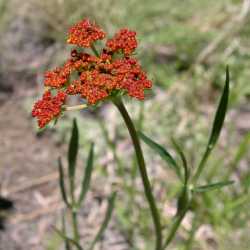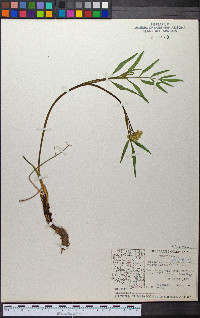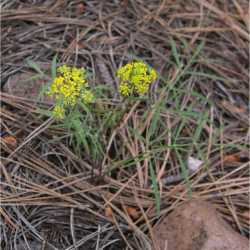|
|
 Flowers Max Licher @http://swbiodiversity.org, Usage Rights: Creative Commons Attribution-ShareAlike (CC BY-SA) |  Leaves Deaver Herbarium (Northern Arizona University), Usage Rights: CC BY (Attribution) |  Plant Max Licher @http://swbiodiversity.org, Usage Rights: Creative Commons Attribution-ShareAlike (CC BY-SA) | | | |
|
Origin:
Native
Life Cycle:
Perennial
General Desc:
Perennial with stems 3/4 inch to 32 inches tall, from a stout taproot and branching from base; basal and stem leaves may be present; leaves usually once to 3 times divided into leaflets, ultimate divisions of leaflets very narrow to lance-like.
Identification notes: Highly variable; leaves sometimes once-pinnate with narrow leaflets, other times more like flat-leaf parsley leaves. Most common color for the flowers is yellow but they can be red, orange or purple; short stiff hairs at the base of the flower cluster.
Height:
To 32 inches tall
Habitat Description: Forests, woodlands and grasslands.
Plant Communities:
Semidesert Grasslands, Pinyon Juniper Woodland, Montane Conifer Forest
Elevation: 5500 - 12000 feet
Color:
Yellow, red, orange, rarely purple
Shape:
Regular in round clusters
Tubular:
N
Flowering Period:
May - Oct
Description:
Most common color is yellow but can be red, orange or purple. Clearest way to distinguish this species is the short, stiff hairs at the base of the rounded cluster; sometimes solitary, or simple clusters in leaf axils. Ray flowers 5 to 25.
Leaf Color:
Bright green
Leaf Type:
Compound
Leaf Shape:
Narrow
Leaf Margin:
Smooth
Leaf Attachment:
Basal and alternate
Leaves Clasp:
N
Hairs:
No
Spines:
N
Leaf Description:
Variable, leaves sometimes once-divided with narrow leaflets, other times they may resemble flat-leaf parsley leaves with multiple divisions. Stem leaves 1 to 4; basal and stems leaves may be present.
Fruit Type: Capsule
Fruit Notes: Capsule splits into 2 single seeded chambers, well-developed lateral wings.
|
|